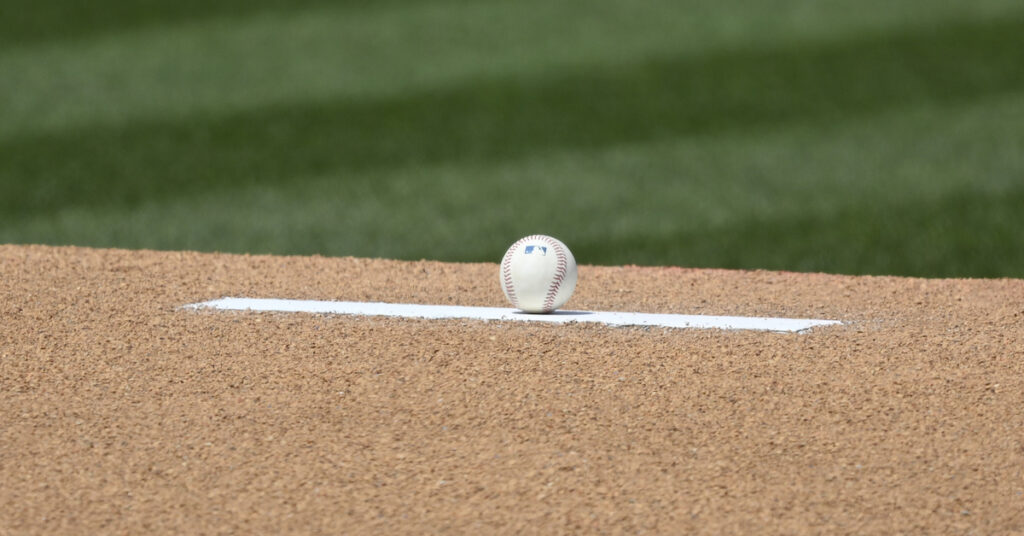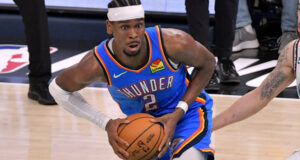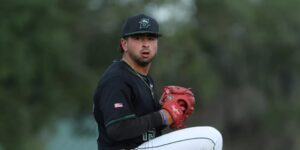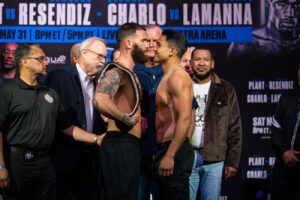
Wednesday is the first day of the new international signing period, so it’s time for me to share expanded and updated evaluations of the players from the class. An overview of the rules that govern signing international amateurs can be found in MLB’s glossary here, while more thorough and detailed documentation can be found starting on page 316 of the CBA and page 38 of the Official Professional Baseball Rules Book. Players have until December 15 to sign before this signing period closes.
Scouting reports, tool grades, and projected signing teams for about 50 players from the 2025 class can now be viewed over on The Board. Because the International Players tab has an apples and oranges mix of older pros from Asian leagues and soon-to-be first-year players, there is no explicit ranking for this amateur class on The Board. That said, I’ve stacked the class with a ranking in the table below, and as usual, that ranking will live on the International Players dropdown of The Board after most of these guys have finished signing in the coming weeks.
Below I’ll run down how I compiled this list, talk about the class as a whole, and then discuss how Roki Sasaki’s presence is impacting the proceedings.
How Is This Information Compiled?
My first step is to source rumored bonus amounts, often hopping on the phone with people involved with the international space to see which players they or their team have heard will receive a significant bonus, usually $1 million or more. That’s often about 50 players, and I’ve ranked 50 below. Despite it being against the rules, most teams enter into verbal agreements with players and their trainers/agents many months, and sometimes as many as three or four years, before their actual signing day. When a team and a player come to a verbal agreement and commitment to a bonus, other teams are alerted to the agreement, usually by the player’s trainer. Teams keep track of rival clubs’ bonus allocations to gauge the market and assess the total amount of money still available around the league, as well as to determine how much each team has promised to players. This is largely how I’m able to efficiently collect bonus information, a process that takes place in fits and starts over the course of a couple of years.
As the bonuses trickle in, I start to collect biographical data like a player’s position, date of birth, handedness, and measurables, with the measurables likely to have some error rate because of how much players this age can physically change in a short period of time. Once I have a fairly complete picture of the players expected to garner meaningful bonuses, I start to make more scouting- and evaluation-centric calls and inquiries to augment the initial bonus-based foundation of the list. Heuristics play a big part in that augmentation. Up-the-middle defenders, players with physical projection, and those who have demonstrated feel to hit tend to bubble to the top of the list, especially if the player exhibits more than one of these traits. Players who agree to deals during the early part of the calendar often stop showcasing for other teams, and it can be multiple years between when a player was last seen by rival clubs and when he signs, which creates huge evaluation accuracy variance in this market. I combine all of that with my in-person notes (rare in this space) and supplementary video analysis (more common than ever thanks to encrypted file sharing and players’ social media), plus one last pass at all the bonuses to try to make those as accurate as possible, and things are fully baked.
Of course, there are some holes left open by doing it this way. Chiefly, there are definitely players below my bonus threshold who are talented enough to be on this list, but I simply don’t know about them yet. Aside from team personnel who closely monitor their own guys’ progress during “the commitment window,” I haven’t found a way to capture those pop-up prospects across the whole league, and obviously the team personnel route creates issues with both objectivity and me telegraphing my sources. It’s up to the sub-$1 million bonus guys to separate themselves later this year when they start playing pro ball. Based on my sourcing, this year the Guardians and Phillies don’t have a prospect signing for $1 million or more, instead opting to spread six-figure bonuses out across many players.
A useful barometer for new readers: It might be helpful if you think about the Future Value grades here in terms of theoretical draft position. Scouting and comparing international players’ tools and athleticism to those of recent and upcoming domestic amateurs helps me to triangulate approximately where they’d go in a given draft, and assign them an FV based on that approximation. Players with a 50 FV tend to be top five picks in a draft, while a 45+ FV tends to go in the top 10, a 45 FV tends to be a first rounder, a 40+ FV tends to be a second-to-early-third rounder, a 40 FV tends to go in rounds three through five, and a 35+ FV is a sleeper type.
Almost every player who I have as set to receive a bonus of $1 million or more is included in this ranking, along with a smattering of players with high six-figure bonuses, guys who emerged as favorites of scouts or of mine throughout the process. Expected bonus amounts have been sourced via scout and executive word of mouth, and then cross-checked in the week leading up to publication. There are a couple of bonus amounts below where my sources were not in exact agreement. In those cases, the gap has tended to amount to a couple hundred thousand dollars. When players start signing on Wednesday, it’s likely some of the amounts below will be off by at least a little bit because of changes teams made late in the process (which is especially true this year). I’ll put official bonuses on The Board when they’re announced, but for now, those will live in this article. I have brief thoughts on this class as a whole after the table:
2025 International Amateur Prospects
| Rank | Name | Position | Age | Proj. Team | FV | Proj. Bonus |
|---|---|---|---|---|---|---|
| 1 | Roki Sasaki | SP | 23.2 | LAD/SDP/TOR | 65 | — |
| 2 | Josuar De Jesus | CF/SS | 17.2 | SFG | 45+ | $2,500,000 |
| 3 | Elian Peña | 3B | 17.2 | NYM | 45+ | $5,000,000 |
| 4 | Kevin Alvarez | 1B/LF | 17.0 | HOU | 45+ | $2,000,000 |
| 5 | Diego Tornes | LF | 16.5 | ATL | 45+ | $2,600,000 |
| 6 | Yorger Bautista | CF | 17.3 | SEA | 45 | $1,800,000 |
| 7 | Andrew Salas | SS | 16.9 | MIA | 45 | $3,700,000 |
| 8 | Crisopher Polanco | SS | 17.0 | TOR | 45 | $2,500,000 |
| 9 | Cris Rodriguez | RF | 17.0 | DET | 45 | $3,200,000 |
| 10 | Ruben Castillo | CF | 17.0 | NYY | 40+ | $1,500,000 |
| 11 | Dorian Soto | SS | 16.9 | BOS | 40+ | $1,200,000 |
| 12 | Raudy Reyes | SIRP | 16.4 | ATL | 40+ | $1,800,000 |
| 13 | Johan De Los Santos | CF | 16.5 | PIT | 40+ | $2,500,000 |
| 14 | Juan Thomas | SS | 17.1 | CHC | 40+ | $1,100,000 |
| 15 | Deivid Coronil | SS | 17.3 | SDP | 40+ | $900,000 |
| 16 | Daniel Hernandez | C | 16.9 | WSH | 40+ | $1,000,000 |
| 17 | Harold Rivas | CF | 16.7 | BOS | 40 | $1,000,000 |
| 18 | Juan Cabada | SS | 16.7 | CHC | 40 | $1,500,000 |
| 19 | Manny Cedeno | SS | 16.4 | NYY | 40 | $3,500,000 |
| 20 | Gabriel Davalillo | C | 17.2 | LAA | 40 | $2,300,000 |
| 21 | Ayden Johnson | 3B | 16.9 | OAK | 40 | $2,000,000 |
| 22 | Kenny Fenelon | CF | 17.3 | MIL | 40 | $1,300,000 |
| 23 | Shotaro Morii | TWP | 18.1 | OAK | 40 | $1,500,000 |
| 24 | Brayan Cortesia | SS | 17.2 | WSH | 40 | $2,000,000 |
| 25 | Kendry Martinez | 2B | 17.3 | SEA | 40 | $2,800,000 |
| 26 | Warren Calcaño | SS | 17.2 | KCR | 40 | $2,500,000 |
| 27 | Jhoan De La Cruz | SS | 17.2 | SDP | 40 | $2,000,000 |
| 28 | Juan Sanchez | SS | 17.3 | TOR | 40 | $1,000,000 |
| 29 | Jose Luis Peña | SS | 16.4 | BAL | 40 | $1,000,000 |
| 30 | Darell Morel | 3B | 17.3 | PIT | 40 | $1,800,000 |
| 31 | Royel Strop | CF | 16.6 | STL | 40 | $1,400,000 |
| 32 | Maikel Coret | RF | 17.3 | TBR | 40 | $2,000,000 |
| 33 | Elian De La Cruz | RF | 17.3 | ARI | 40 | $1,200,000 |
| 34 | Warel Solano | SS | 17.3 | TBR | 40 | $1,100,000 |
| 35 | Raymer Medina | SS | 17.2 | TBR | 40 | $1,100,000 |
| 36 | Kevin Defrank | SP | 16.4 | MIA | 35+ | $600,000 |
| 37 | Darwin Ozuna | RF | 16.8 | OAK | 35+ | $1,000,000 |
| 38 | Eliomar Garces | SS | 17.3 | TBR | 35+ | $1,600,000 |
| 39 | Haritzon Castillo | SS | 16.8 | MIN | 35+ | $950,000 |
| 40 | Wilfri De La Cruz | 3B | 17.3 | CHC | 35+ | $2,500,000 |
| 41 | Santiago Leon | SS | 16.6 | MIN | 35+ | $1,700,000 |
| 42 | Alejandro Cruz | 3B | 18.0 | CHW | 35+ | $2,000,000 |
| 43 | Lieberts Aponte | SS | 17.2 | CIN | 35+ | $1,900,000 |
| 44 | Yulian Barreto | SS | 17.3 | SFG | 35+ | $900,000 |
| 45 | Breyson Guedez | LF | 17.3 | OAK | 35+ | $1,500,000 |
| 46 | Djean Macares | CF | 16.7 | SFG | 35+ | $1,200,000 |
| 47 | Elorky Rodriguez | LF | 17.1 | TEX | 35+ | $1,100,000 |
| 48 | Christopher Acosta | SS | 17.0 | MIL | 35+ | $1,100,000 |
| 49 | Carlos Taveras | LF | 16.6 | MIN | 35+ | $1,250,000 |
| 50 | Kamuel Villar | SS | 17.4 | COL | 35+ | $1,000,000 |
This class isn’t awesome. There are some very, very exciting hitters at the very top, and there will undoubtedly be some good smaller-bonus prospects who emerge from this year’s class, but the depth of exciting prospects that we’ve had the last two years is not present in this group. There are roughly half as many “high-upside prospects” (colloquially how I refer to 40+ FV prospects and above) in this year’s class as there were last year. An inordinate number of hitters with utility type ceilings are part of this year’s class, guys who can really play shortstop but who might not hit, or who don’t have power, or who possess some other ceiling-limiting trait.
The Roki Sasaki Situation
If you’re reading this, you are likely already familiar with the background of this saga: Japanese phenom Roki Sasaki, who is still young enough to be subject to international bonus pool restrictions, is the elephant in the room of this signing class. The timing of his posting has given rise to several logistical and ethical dilemmas. The majority of teams promised most or all of their bonus pools to players long before they knew Sasaki would be posted this offseason, and have been courting him while the players they verbally committed to during the last few years wait in limbo. Successfully land Sasaki, and his new team will most likely need to break its verbal agreements with most or all of a signing class of Latin American teenagers in order to allocate pool space to Roki. The players Sasaki’s team cuts loose will then re-enter a market that, collectively, has very little money to spend because most of the other teams have also pre-committed the lion’s share of their available money. As of last night, several of the teams that had been pursuing Sasaki were notified that he would not be signing with them, leaving the Dodgers, Padres, and Blue Jays as the finalists.
This dynamic has caused a flurry of activity just before signing day. I have had multiple sources tell me that the teams that are in the mix for Sasaki have told their players, many of whom have been living and training on their complexes in Latin America for years, that they will not be signing on the 15th when the new period begins and will need to wait a week or so. (Sasaki’s posting window closes on the 23rd.) According to sources, these teams include the Dodgers and the Padres.
Fear that they or their clients might be cut loose and lose a game of bonus pool musical chairs has caused players and agents to proactively seek a stable home elsewhere with a team that still has pool space left. On Friday, the Pirates agreed to sign Darrel Morel, a former Dodgers commit, for $1.8 million, which is more than the approximately $1 million bonus my sources indicate he had agreed to with Los Angeles. Morel worked out in front of teams in Dodgers gear on Thursday, then had a new agreement the next morning. Elsewhere, the White Sox plucked outfielder Orlando Patiño away from the Dodgers yesterday (both Patiño and Morel finding new homes were first reported by Baseball America), and as I noted to Mike Ferrin and Jim Duquette on Sirius XM this morning, according to my sources, the Twins pried center fielder Teilon Serrano away from Los Angeles late yesterday. So far, each of these players has left the process with more money than they had agreed to with the Dodgers.
Now that Sasaki’s suitors have been narrowed down, the other activity to watch for is the trading of pool space and the potential breaking of agreements so teams have pool space to trade. Initial bonus pool allotments range from about $5 million to $7.5 million, and clubs can acquire 60% of their original pool space in increments of $250,000. Because Sasaki’s decision to come over now is costing him a couple hundred million dollars, it’s possible money is no object here and he will just as happily sign for $3 million as he would for $7 million. But should it become vital for any of Sasaki’s last three dance partners to accumulate as much pool space as possible, either to sign just him, or to sign him and some number of their other committed players, other teams will try to take advantage of this. What if the prospect you can pry away from the Dodgers or Padres is better than the one you were going to sign for that bonus pool space? We’re tantalizing close from being done with this kooky, quite rare situation and are approaching a time when we get to watch Sasaki pitch on our shores, but his decision to be posted now has had profound implications for the 2025 international class.







